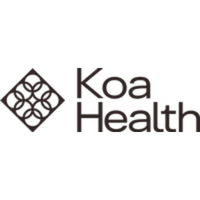How a hybrid healthcare approach combines digital tech with the human touch
As a result of the Covid-19 pandemic, healthcare professionals have become accustomed to leveraging digital tools to provide care from a distance. This is especially true in areas such as preventative care, mental health care and post-operative follow-up.
Over the last two years, the pandemic forced providers to re-examine their unwavering belief that all care had to be delivered face-to-face. Many institutions, now comfortable with delivering care virtually, are incorporating ‘hybrid care’.
Renowned academic medical centre the Mayo Clinic conducted a trial of hybrid care for post-surgery patients – with 87% of participants describing their experience as ‘positive’.
This type of care combines the benefits of in-hospital attention with at-home and on-the-go support. It avoids the pitfalls of traditional care (limited flexibility) and purely tech-based care (not enough human touch). It offers a holistic, integrated experience for patient populations who might have varying preferences and needs for mental and physical health support.
There are important lessons here for delivering care to employees. While some might benefit from the flexibility associated with digital solutions, there should be consideration for those who would do better from that additional human touch. But how can employers differentiate between hybrid care options and what are the potential benefits for organisations and employees?
How does hybrid care work?
Hybrid care combines traditional in-person care with digital tools to improve efficiency for doctors and make day-to-day support more accessible for patients. This type of care uses technology to perform repetitive, time-consuming tasks.
Such tasks might include reminding people to do a daily thought record in cognitive behavioural therapy for depression. Others might include flagging changes in behaviour to a therapist so that they can step in and provide a more human intervention (messages, calls, or a counselling session) as needed.
What are the benefits of a hybrid approach to care?
This combination of professional guidance and digital-first tools enables people to thrive and grow towards managing their own care. It reduces costs for insurers (and employers). And perhaps more crucially for a care system where demand is outpacing resources, it extends the reach of time-strapped therapists and clinicians.
In specialities like mental health, digitally enabled self-management can add significant value for those awaiting a diagnosis or treatment. In the NHS, waiting lists for mental health services can have delays of more than 18 weeks for patients in need of mental health support. Digital tools can provide a cost-effective way to prevent people’s mental health from deteriorating, giving them the skills to cope during transition to more intensive care. A digital intervention may actually prevent individuals needing that escalation in care.
Is hybrid care right for your workforce?
Whether work at your organisation is in-person, remotely or both, employees have busy lives and have varying preferences and priorities when accessing the care and support they need.
Today, 92% of UK over-16s own a smartphone. This is accompanied by high levels of technological literacy among populations of all ages. As a result, app-based tools improve, instead of limit, access to care for the most employees.
Improved access to care is especially relevant in areas like mental health, where stigma and practical barriers (physical distance, expense, time constraints) may keep many employees from seeking out face-to-face support. Being able to access in-the-moment support discreetly can be a game changer for many on your staff, who may not feel like they’re unwell enough to seek out in-person clinical care.
Finding the right formula
The challenge for employers who want to provide hybrid care that is truly comprehensive to employees is two-fold. First, they’ll need to evaluate current offerings to identify gaps in care that can be filled or reduced with digital tools. Then they’ll need to find a way to integrate innovations with existing benefits and employee assistance programs (EAPs) so that employees have a seamless experience and their care providers have access to data across in-person and digital platforms.
Employers will also want to ensure that they have access to population-level data (ethically handled and properly anonymised) to help them track and evaluate the effectiveness of their coverage and identify problems as they arise.
Whatever your organisation’s approach to care is at present, mental health impacts the overall wellbeing of both individual employees and your workplace. For more on how you can support and protect employee wellbeing, access our report, Helping employees overcome barriers to mental wellness: Key benefits and the case for investment.
Supplied by REBA Associate Member, Koa Health
At Koa Health, we believe digital mental health solutions are the answer to mental health issues.








